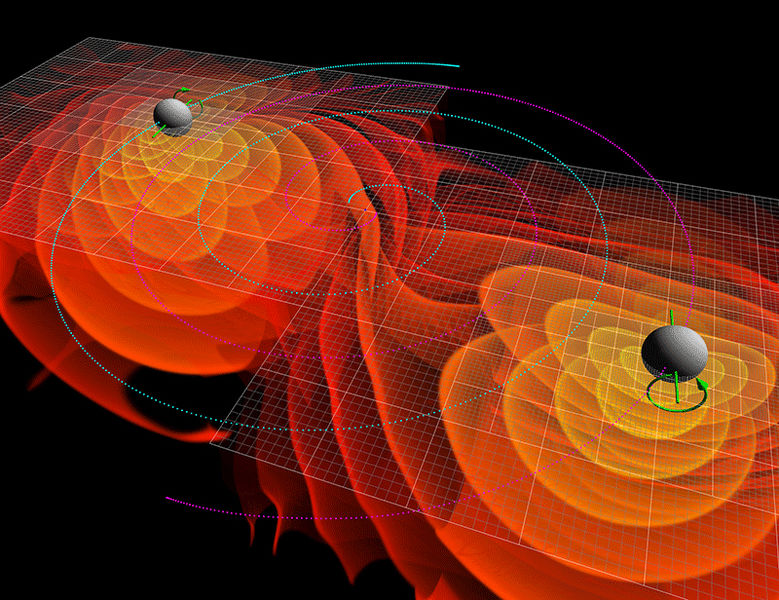LIGO’s Four Gravitational Wave Detections Come From Off-Kilter Black Hole Mergers
Credit to Author: Becky Ferreira| Date: Wed, 23 Aug 2017 17:00:00 +0000
Two years ago, an entirely new field of astronomy was born when the Laser Interferometer Gravitational-Wave Observatory (LIGO) directly detected a gravitational wave for the first time. These waves are ripples in the fabric of spacetime that travel at the speed of light, and are created by disruptive events like the explosions of stars or the merging of black holes.
LIGO has since sensed a total of four of these cosmic tremors, all of which were likely created by binary black hole system mergers. These unions occur when two black holes in close orbit around each other coalesce into a single hole, a process that emits strong gravitational wave signatures.
Now, a team led by Will Farr, an astrophysicist at the University of Birmingham, demonstrates how these early detections of gravitational waves are packed with valuable information about the black hole systems that generated them, and in turn, the stars that formed those black holes once they collapsed after exploding into supernovae.
“Binary black holes are like the carcasses of dead high-mass stars,” Farr told me in a Skype interview. “When we look at them, we’re seeing the end stage of high-mass stellar evolution. As the detectors get better, we will be seeing them across cosmic history, and so we’ll be able to build up a picture of how stars have been forming and dying over the history of the universe in a way that’s hard to do through other observations.”
In a paper published Wednesday in Nature, Farr and his colleagues mined the data from the four previously detected events for clues about whether the two black holes were spinning in alignment with the binary system’s orbital axis.

Imagine it like this: Two spinning tops are circling each other on a table surface, and they are getting closer to a collision. In one scenario, the tops are rotating in the same direction and speed, with their tips both facing straight up, while another scenario has them wildly swerving around, perhaps rotating in opposite directions and at different speeds, with their tips pointing in unaligned directions.
In a nutshell, these are two of the major theories explaining the dynamics of binary black hole systems. Neatly aligned black hole systems are more likely to be formed from high-mass stars that orbit each other during their stellar phase, then die and collapse together, which is why the black holes they form have relatively similar spin properties.
Misaligned systems are more likely to be created by stars that collapsed into black holes separately, then became gravitationally entangled once they were already in black hole form, explaining their mismatched spin characteristics. Either way, this information is encoded in the waves that have been—and will continue to be—captured by LIGO, and future gravitational wave detectors.
Read More: This Composer Made Music Out of Gravitational Waves
“What we see in gravitational waves is stretching and squeezing,” Farr said. “That’s what the interferometers [at LIGO] measure. But that correlates with the orbit of the system. Twice per orbit, there’s a stretch and a squeeze, so we trace those stretches and squeezes and use them to map out the orbits.”
Farr’s team discovered that all four waves appear to have been created by the misaligned variety of binary system, suggesting that might be the dominant merging process. But the team warns that such a small sample size can’t be used to make conclusive statements about these extraordinary events just yet, though it does foreshadow the wealth of information to come.
“I think this result is really exciting,” Farr told me. “I also think in a decade we’ll look back on it and we’ll go—’wow, we were naive.’ We have four detections. There’s going to be tens, maybe hundreds more, in years [to come]. It’s just going to explode.”
“We try to appear stoic,” he said. “You don’t write a paper saying: This is awesome! But we kind of have that feeling. It’s definitely a frontier.”
Get six of our favorite Motherboard stories every day by signing up for our newsletter.